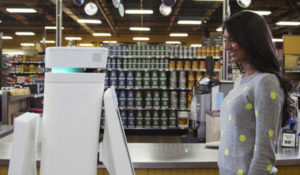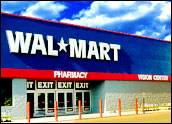
The holiday season may bring joy to consumers and retailers alike, but hand in hand with that joy comes the inevitable pain of post-holiday returns.
Gift returns can be a hassle for consumers, but for retailers they pose a daunting logistical challenge, requiring speedy adjustments throughout the pipeline as consumers are reimbursed and products are returned to inventory.
Adding to the pressure is the fact that consumers have increasingly demanding expectations. Retailers may struggle under the burden of the additional challenges of the holiday season, but 20 percent of consumers actually expect better service during the holidays than usual, Patti Freeman Evans, senior retail analyst with JupiterResearch, told CRM Buyer.
Expectations Gap
Even during the rest of the year, there’s a gap between expectations and delivery, she added: 53 percent of consumers expect to be able to make returns and exchanges to any channel, for example — no matter how they bought the product — yet only 42 percent of retailers make that possible.
Gaps like that don’t bode well for future sales either. Easy returns are consistently in consumers’ top five requirements for a good shopping experience, Gartner analyst Mim Burt told CRM Buyer.
Even more compelling: One-third of consumers say that if they encounter a problem during the shopping process — such as unsatisfactory handling of a return — they’re unlikely to shop with that retailer again in any channel, she added.
“Unless the retailer can give consumers a highly satisfying experience, those consumers will be unlikely to come back,” she said.
In other words, retailers have good reason to go all out to please consumers both during the holiday season and afterward.
More Sales, More Returns
Returns tend to be directly related to holiday sales, so stronger sales lead to increased levels of post-holiday returns, Ken Johnson, vice president of corporate development for retail technology vendor Newgistics, told CRM Buyer.
Thanks to the subprime mortgage crisis and high gas prices, among other economic factors, overall U.S. holiday sales are projected to increase by a modest 4 percent this year to US$474.5 billion, according to the National Retail Federation. If those predictions play out, it will represent the slowest growth since 2002, the NRF says.
That might suggest lower levels of returns come January, Freeman Evans noted.
The Online Component
Yet the picture for online sales is brighter. JupiterResearch projects an increase of a full 20 percent in U.S. online sales in November and December over those from 2006, for a total of $39 billion.
Indeed, online sales are expected to account for an increasing proportion of retail sales in the coming years. For example, whereas the world’s biggest retailers reported e-commerce sales amounting to an average of about 8.5 percent of their overall sales at the end of 2006, that number is expected to grow to 15.8 percent by 2011, Burt said.
It may be good news for e-tailers, but returns are always proportionately higher for online purchases than for those made through stores, she noted.
Bottom line? Happier e-tailers during the shopping season; a bigger crush of returns afterward.
Minimizing Returns
So what can retailers — both online and in stores — do to prepare for post-holiday returns? The first thing is to do everything they can to minimize return levels in the first place, Scott Silverman, executive director of Shop.org, told CRM Buyer. Shop.org is the National Retail Federation’s digital division.
For online channels, that can be a matter of simply providing consumers with more detail about the product so that they have a better idea of what to expect. One effective way to do that is to give customers the opportunity to write product reviews, Silverman suggested.
“The retailer may write a paragraph describing the product, but nothing will convey what it’s like to use better than hearing from hundreds of customers who have used it already,” he explained.
Providing more product information helps with conversion rates into sales on the front end, and by creating more realistic expectations it also reduces the incidence of returns on the back end, he said.
Silver Lining
In terms of managing the returns that do come in, retailers are also taking the traditional step of adding staff for the season to help with returns processing, Johnson said.
Eliminating any restocking fees and offering a choice among reimbursement methods are also steps retailers must take to satisfy consumers, Gartner’s Burt added.
Tapping into consumers’ desire to have flexibility in the channels they use for returns, another key step is for retailers to allow them to return merchandise to stores, even if it was purchased online or from a catalog, Silverman added.
Not only does that flexibility make returns more convenient for consumers, but it also can create an expected advantage for retailers: A full 26 percent of consumers returning a product purchased online to a store actually end up purchasing something else while they are in the store, he said.
Had that return been made through the mail, those follow-up purchases may never have been made, creating a sort of “silver lining” for retailers on the returns process.
Returns From Home
Retailers can also make it easier for consumers to return holiday gifts by giving them the option of using SmartLabel technology, Newgistics’ Johnson noted. SmartLabels allow consumers to place return packages in the mail from home; Newgistics then collects the packages early in the mail stream and returns them to the appropriate retailers, he explained.
Overall, retailers are generally improving their handling of returns on the front end, Burt said. Quickly incorporating returned products back into inventory and onto the balance sheet is another challenge many retailers are currently struggling with, she said.
The next challenge, Burt added, is to provide better integration with historical customer data so that retail associates processing a return can recognize when a customer is a frequent buyer, for example.
The Next Step
“While a lot of returns software has traditionally concentrated on loss prevention rather than the customer experience, with much of the processing power dedicated to detecting fraud, that’s starting to shift,” she noted.
“A return is just a reverse customer order,” Burt explained. “Retailers are usually careful to be customer-friendly with orders going out, and they should do the same thing when an order comes back. The next step is to say, ‘you buy a lot from us — here’s an incentive to come back.'”






















































Social CRM
See all Social CRM